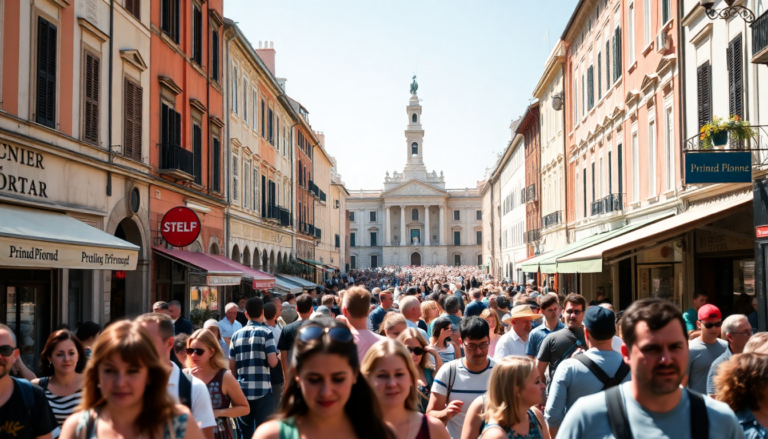Argomenti trattati
Summer is lurking just around the corner, and with it comes the annual debate on overtourism. As many are gearing up for their holiday plans, it’s essential to consider not just where to go, but also where to steer clear of. According to a recent study by Which?, a UK-based consumer advocacy organization, some of Europe’s most popular destinations are drowning in tourists, and there are plenty of hidden gems waiting to be discovered instead.
The rise of overtourism
Overtourism is not just a buzzword; it’s a reality affecting countless beautiful places across Europe. In a quest for Instagrammable moments, travelers often flock to the same well-known spots, creating a cycle of congestion and, frankly, disappointment. I remember my last trip to a famed beach on the Amalfi Coast, where the sheer number of tourists made it nearly impossible to enjoy the scenic views. It was a classic case of too many people, too little space. If you’re looking to avoid that scenario this summer, let’s dive into the destinations you might want to skip.
Top overtourism hotspots to avoid
Kicking off our list is Zante, or Zakynthos, which, with its population of around 40,000, recorded a staggering six million overnight stays in 2023. That translates to an astronomical 150 stays per resident! While the island has its charm, the consequences of this influx are all too evident, leading to crowded beaches and inflated prices. Who wants to pay extra for an experience that feels anything but unique?
Next in line is the stunning Istria region in Croatia, which has become a victim of its own allure. With an eye-popping 133,467 overnight stays per 1,000 residents, it’s hard to reconcile the image of a hidden gem with the reality of throngs of tourists. The picturesque towns, once quaint and serene, now grapple with the chaos of overtourism. Dubrovnik is also on this list, where the historic charm of its old town is being overshadowed by the sheer volume of visitors. Prices for food and accommodation have skyrocketed, leaving both locals and travelers feeling the pinch.
Canary Islands: a double-edged sword
The Canary Islands, particularly Fuerteventura, present another stark example of overtourism’s impact. With 118,720 overnight stays per resident, the islands are battling against an overwhelming influx, despite the protests from locals. The natural beauty of these islands is still breathtaking, but as the saying goes, too much of a good thing can be detrimental. Lanzarote follows closely, with its volcanic landscapes attracting millions each year, but the struggle for resources like water has become a pressing issue for residents.
Greek islands feeling the strain
Over in Greece, the Dodecanese islands are facing similar challenges. Rhodes, famous for its medieval architecture and stunning beaches, sees an annual tourism rate of 113,790 overnight stays per resident—again, a recipe for chaos. While the economic benefits are undeniable, the strain on local infrastructure and housing options is becoming increasingly difficult. The Greek government has been forced to step in, implementing measures to manage the flood of tourists, including caps on cruise ship arrivals.
But fear not, for every crowded destination, there are still hidden treasures waiting to be explored. Instead of battling the masses in Hallstatt, Austria, a charming but overcrowded town, consider venturing into lesser-known alpine villages. They offer the same stunning landscapes without the tourist traps. And while the Cyclades are alluring, islands such as Naxos or Paros provide a more authentic Greek experience without the overwhelming crowds.
As many know, striking a balance between enjoying travel and preserving the integrity of a destination is crucial. The key is to seek out those places that maintain their authenticity while still welcoming visitors. This summer, let’s embrace the spirit of exploration and choose the road less traveled—after all, the journey is just as important as the destination.

